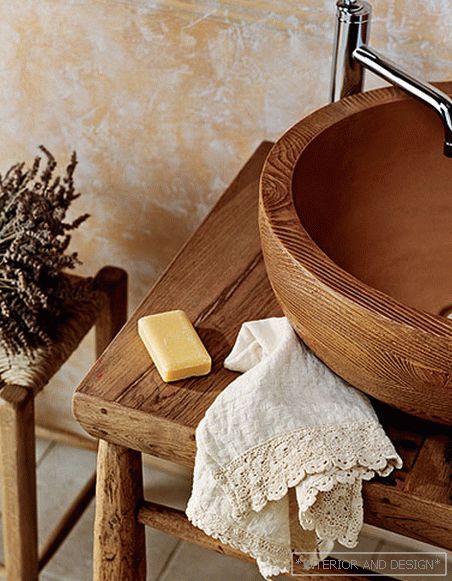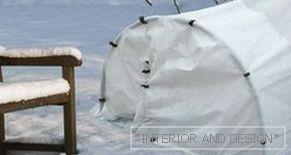 In the autumn, the plants begin to actively prepare for the winter cold, slowing the growth processes, dropping foliage. But not all planted crops will be able to survive the period of frosts without prior training made by man. Therefore, not only spring makes a lot of attention paid to the ground and the seedlings planted on it. Autumn is the period of wrapping with special plant materials. These actions must be carried out before the first frosts, because winter is not an easy period, and the flowers will be hard without help.
In the autumn, the plants begin to actively prepare for the winter cold, slowing the growth processes, dropping foliage. But not all planted crops will be able to survive the period of frosts without prior training made by man. Therefore, not only spring makes a lot of attention paid to the ground and the seedlings planted on it. Autumn is the period of wrapping with special plant materials. These actions must be carried out before the first frosts, because winter is not an easy period, and the flowers will be hard without help.
Content
- 1 Why do I need to cover the plants?
- 2 Covering material
- 3 What plants need to cover?
- 3.1 We harbor roses for the winter
- 3.2 We harbor chrysanthemum bushes
- 3.3 Укрываем клематисы
Why do I need to cover the plants?
Increasingly, crops that have been developed and developed in other climatic conditions and have never been exposed to frost appear on our plots. Of course, almost all saplings are already modified hybrids, which will be easier to adapt to a more severe climate. But this does not guarantee that the plant will withstand frost resistance just as firmly as the culture of the local flora. Therefore, attention and care, imported seedlings require more.
Frost-resistance of saplings depends on many factors, here are just a few of them:
-
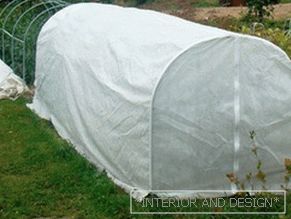 Saplings imported from warmer countries, as well as more hardy hybrids of these crops, can hardly endure a temperature drop below twenty-five degrees.
Saplings imported from warmer countries, as well as more hardy hybrids of these crops, can hardly endure a temperature drop below twenty-five degrees. - Long-term low temperature leads to the complete destruction of the plant, both the root and its ground part.
- The instability of the autumn weather, which alternates with warming frosts, has a detrimental effect on seedlings.
- A cold summer with prolonged rains leads to the fact that the growing season is stretched out, and later autumn ripening of seeds does not allow the plant to slow down all life processes, thereby preventing it from preparing properly for the wintering period.
- Incorrect application of fertilizing may also have a detrimental effect on the culture. If you apply an excessive amount of fertilizer or do it in a late period in which nitrogen is present, this can provoke a stretching of the growing season, which will prevent the seedling from preparing for hibernation.
All of the above will lead to the fact that if you do not apply covering material, the plant will not tolerate winter and die.
Covering material
The covering material produced by modern industry can be used both for food crops and for ornamental crops. In addition, nature itself provides a means to shelter plants for helping man.
Main natural and industrial covering material:
-
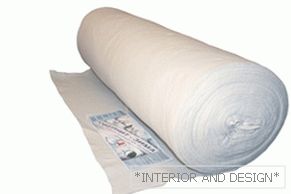 The coniferous branches and the needles themselves have a heat-retaining and snow-retaining properties, if needled them with a sufficient layer.
The coniferous branches and the needles themselves have a heat-retaining and snow-retaining properties, if needled them with a sufficient layer. - Lutrasil is a material that is an artificial coating with different densities. They harbor both the soil itself and are used for the construction of covering structures for covering the framework.
- Mulch mixture purchased in flower shops. Made from natural ingredients. Used for harboring very sensitive plants that do not tolerate temperature fluctuations.
- Humus is a natural mixture of foliage and grass. With the help of peat, it is easy to make mulching and hilling of the area that needs to be covered.
- Kraft paper is a material that, due to its density, isolates plants well from frost and other adverse winter conditions.
All these covering materials are able to protect planted crops from the bitter cold of winter, but they have disadvantageswhich should be considered.
For example, lutrasil, with all its insulating properties, does not contribute to the normal circulation of air, which leads to heating of plants when the outside temperature rises. This can happen during a period when winter for a short period took a breather, raising the temperature, which provoked a thaw.
Humus can also have a significant disadvantage, which will overshadow all its advantages. This covering material may contain pests or serious illnesses. All this can not affect the health of harboring crops.
What plants need to cover?
We harbor roses for the winter
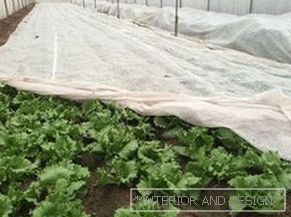 Roses are undoubtedly considered to be one of the most beautiful flowers, so beloved by gardeners. And it is very important that the process of preparing rose bushes for the winter is correct, this will make it impossible for the favorite bushes to die from freezing. And in different species ways of shelter may differso you need to take into account all the nuances.
Roses are undoubtedly considered to be one of the most beautiful flowers, so beloved by gardeners. And it is very important that the process of preparing rose bushes for the winter is correct, this will make it impossible for the favorite bushes to die from freezing. And in different species ways of shelter may differso you need to take into account all the nuances.
So the rose that is woven must be prepared long before the onset of the first frost. Preparation begins with the fact that in early August, fertilizing bushes with fertilizers that contain nitrogen is already stopped. The next stage is to remove from the bushes the incompletely formed shoots to the place of aging, and this should occur in October.
Then from the bushes cut off or cut the foliage and bend the lash down plants, but not allowing them to touch the ground. These manipulations are carried out in order to conveniently use the covering material.
In the same way that braiding bushes are prepared for winter, it is necessary to produce bending down branches standard roses to the ground. But this should be done carefully so as not to damage the integrity of the bush. All other varieties of these flowers are cut in such a way that the covering material well isolates the roots and some above-ground part of the plant from environmental influences.
It is necessary to take into account the fact that if you wrap the roses at minus temperatures, they will cause their death. Therefore, the flowers need to be prepared for the cold period, when the temperature is still above zero in the extreme case.
We harbor chrysanthemum bushes
Chrysanthemums have long become a familiar culture in garden plots. But not all lovers of these unpretentious flowers harbor them for the winter period, so when severe frosts, some varieties of these seedlings may die.
To avoid losses immediately after the flowers wilt, should make simple manipulationsso that the plants must survive the winter and delight everyone in the next season with their flowering. Shrubs are cut, pressed to the ground and covered with a layer of humus or mulch. For the best result, the formed mounds should be covered with waterproof material, which should be removed only after the ground is completely thawed.
Укрываем клематисы
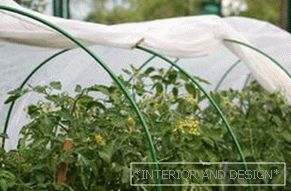 Clematis flower beds must be prepared for the winter period. You need to cut off all varieties of these flowers, but the length of the stem varies from thirty centimeters to a half meter height. Therefore, before cutting, it would be better to consult with a specialist how long the planted variety should be cut.
Clematis flower beds must be prepared for the winter period. You need to cut off all varieties of these flowers, but the length of the stem varies from thirty centimeters to a half meter height. Therefore, before cutting, it would be better to consult with a specialist how long the planted variety should be cut.
Then the bushes are exempt from all unnecessary branches. The remaining vines are twisted into a ring and pressed to the ground. A layer of twenty centimeters of natural insulating material is poured on top. Farther need to install the frameto be covered with waterproof material. This will need to be done in such a way that a small gap for airing is left above the ground.
With the first spring thaws, the covering material must be removed, because the plants can overheat and bloom.
In the spring, all the flowers planted to give friendly shoots, you need to prepare them for a comfortable winter. And good conditions during frosts will be ensured by a properly selected covering material that will protect against snow, wind and low temperatures, until the first rays of the sun warm the earth.

